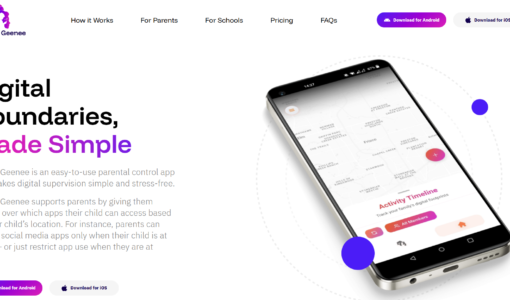The world is changing rapidly. Once a concept of science fiction, Artificial Intelligence has transitioned from the realm of utopia to everyday reality. Virtual assistants answer questions, AI-driven programs personalize learning, and algorithms suggest what to watch. For today’s children, AI is not just a tool; it influences how they learn and interact. While advancing technologies, such as AI, hold great promise, they also present with significant challenges. Children are becoming increasingly reliant on these technologies often, at the expense of their cognitive abilities.
Critical and imaginative thinking is the need of the hour for today’s children. The current reliance on short texts, text speak, or SMS language does not encourage kids to use their inherent cognitive abilities. Our goal is not to compete with AI in terms of processing speed, but to equip our children with invaluable skills such as critical thinking, creativity, empathy, and ethical reasoning. As technology evolves, we must ensure that the next generation understands that true strength lies not in machines, but in the power of their own minds.

The transformation
Artificial intelligence is transforming the way children today acquire knowledge. With an increasing focus on instant gratification—whether in learning, social interactions, or even relationships—there is a notable downside to this fast-paced lifestyle: a lack of time to think, explore, or imagine. The reliance on gadgets is so pervasive that we must question whether our children will continue to develop independent thinking skills without the aid of machines.
There is ongoing discussion about AI across various platforms, including schools, friend groups, conferences, and homes. It’s not about children going head-to-head with AI on data processing; instead, it’s about maintaining their fundamental human skills. If children start depending on AI for writing sentences, performing calculations, and producing artwork, will they still engage in independent thinking and creativity?
Are we adequately exercising our brains?
As children, we were taught to question the world around us, and the word “why” was deeply ingrained in our minds. However. with the rise of Artificial Intelligence, the importance of “why” seems to be diminishing as we increasingly rely on pre-formatted answers. As a means of preparing our children for the future, we must focus on building fundamental human qualities. Children today must be taught to value the importance of argument, critical thinking, discovery, and viewing life beyond the screens. Creativity is born out of the human mind’s yearning for innovation, which cannot be fulfilled by solutions provided by artificial intelligence. We can empathize and be emotionally intelligent which distinguishes us from machines, the pillars of human behaviour.
Technology is not inherently harmful, but it is generally over-analysed. We must teach our kids the ethical implications of new technologies, such as artificial intelligence and chatbots. While it’s important to embrace the benefits of AI, future leaders must grasp the true meaning of power and accountability. This responsibility does not lie with AI; technology can never be in charge. Instead, it is up to us humans to use technology responsibly and wisely to create a better world.
The right balance
We need to ask ourselves if our children are curious enough to understand what is happening around them. Do parents and teachers enhance children’s awareness by encouraging critical thinking, or are we becoming overly reliant on technology? While it is essential to engage and empower our kids with new developments like coding, robotics, and AI, these subjects should be tools for learning and understanding, rather than dominating their lives. Today, many parents rely on parental control apps with location tracking features, not only to monitor their children’s movements but also to help reduce screen time and social media addictions. It’s important to strike a balance for children, combining outdoor activities that enhance imagination, storytelling, and problem-solving with indoor activities that foster genuine friendships and socialization.
The future
Children should encounter challenges and learn to solve them independently instead of seeking instant answers from AI solutions. As AI becomes a permanent fixture in our lives, the key challenge for our children is to develop resilience, intelligence, and ethics to collaborate effectively with technology. We must ensure that our human judgment, not AI, guides our actions. By focusing on our unique strengths, we can prepare the next generation for a world shaped by AI and encourage them to design it.













